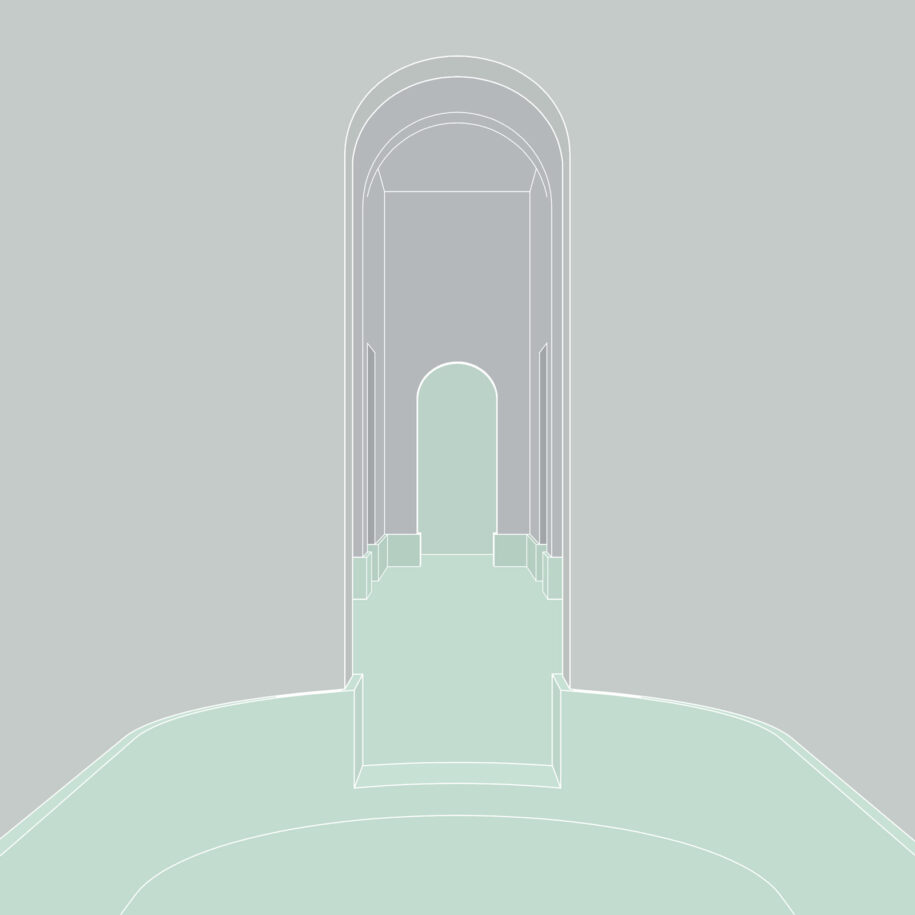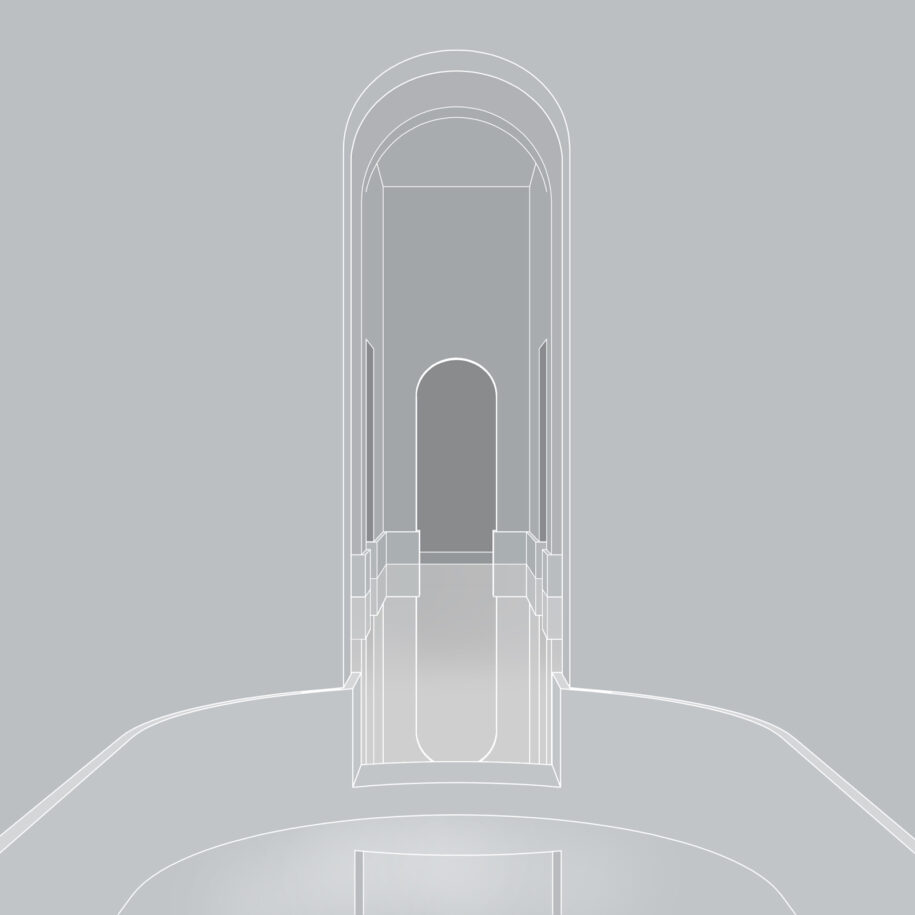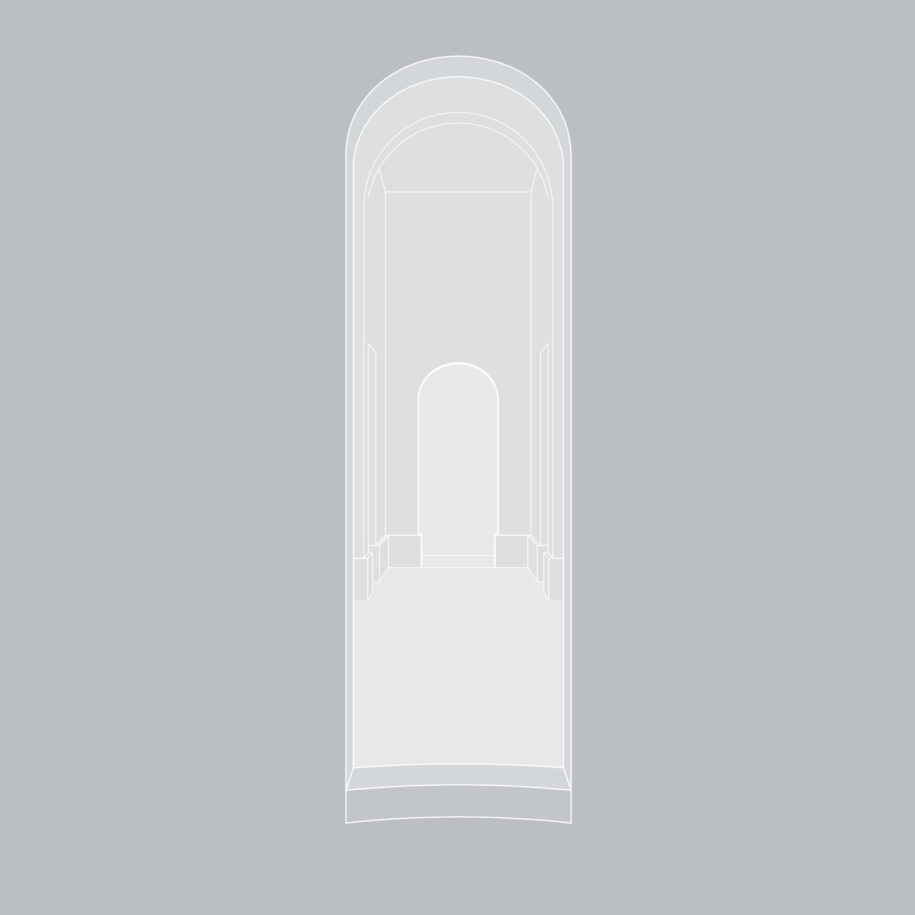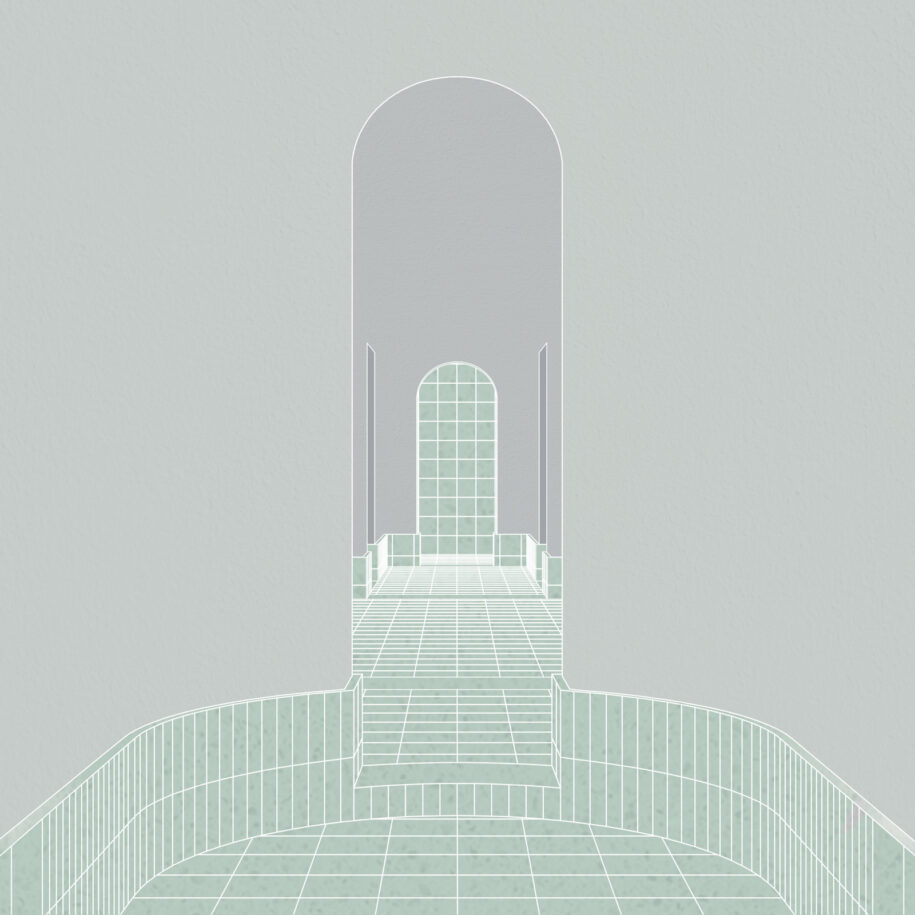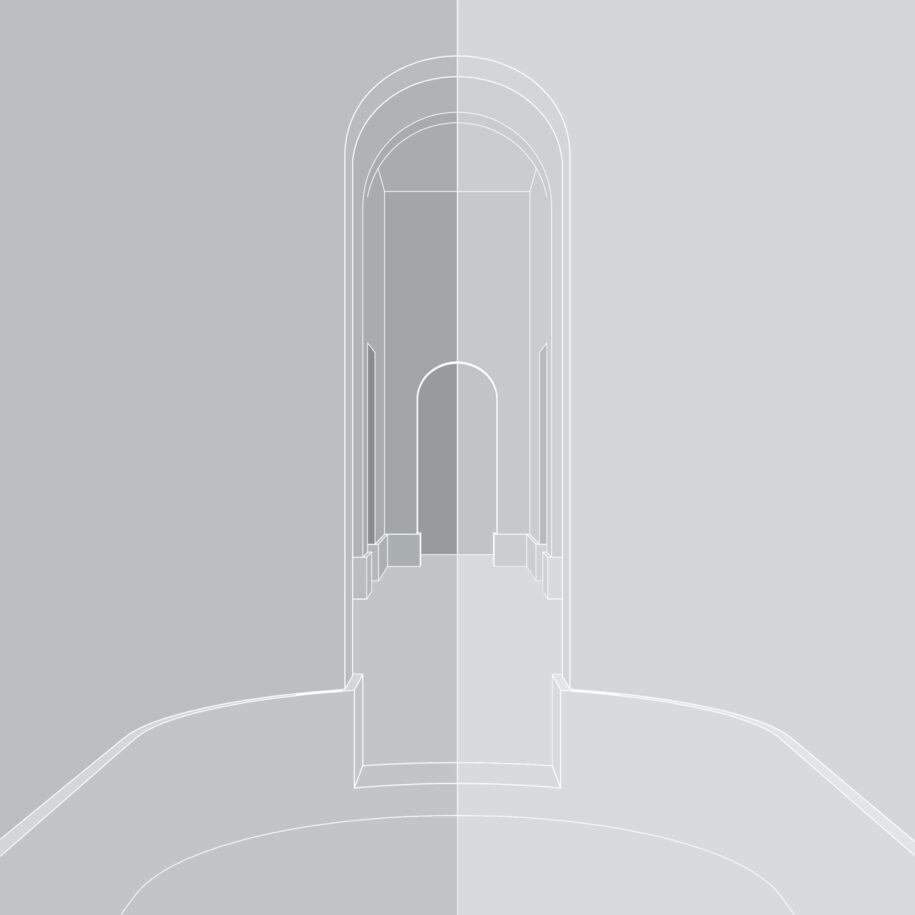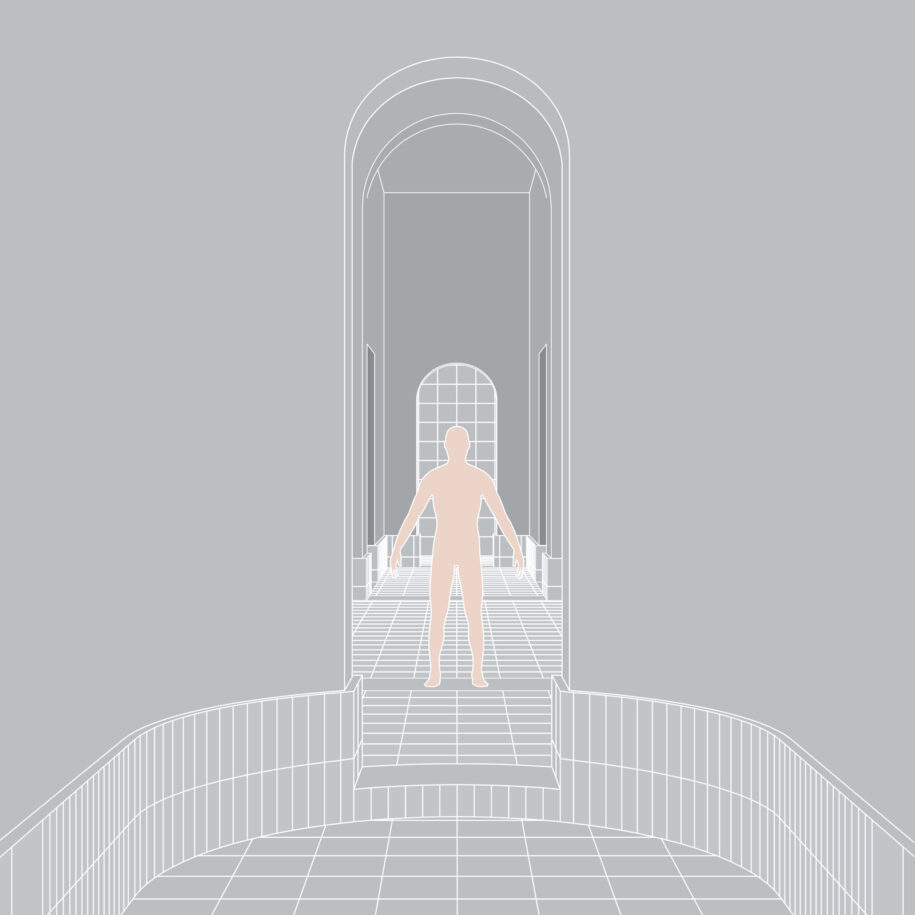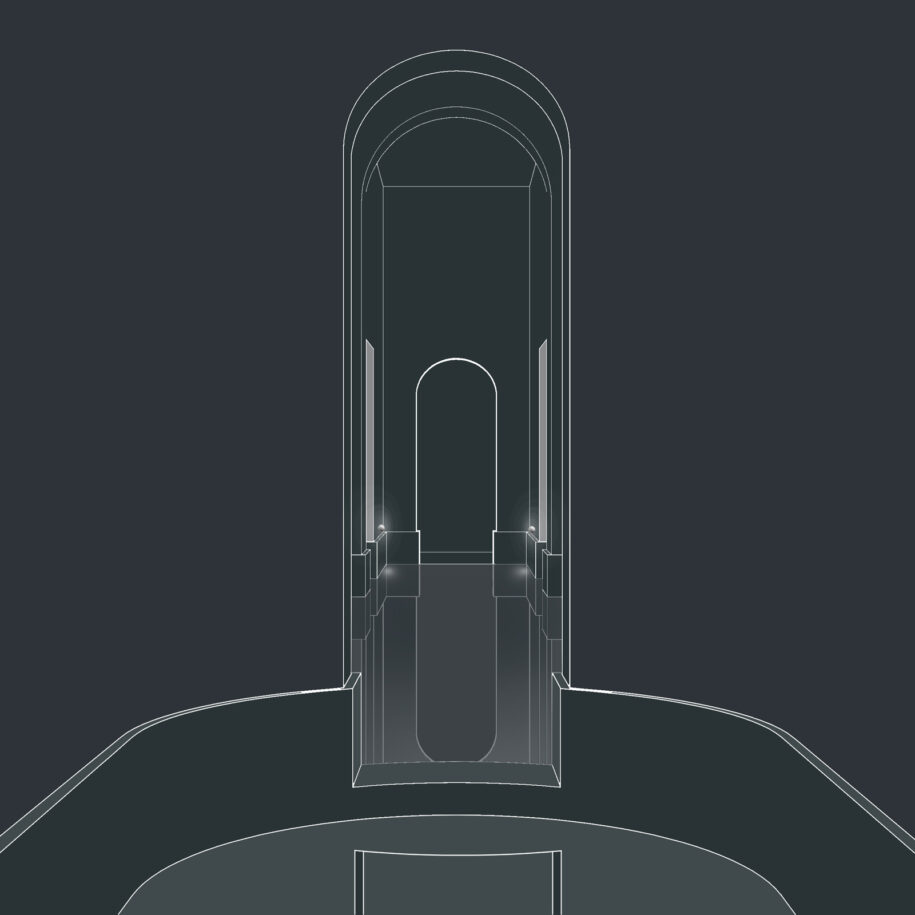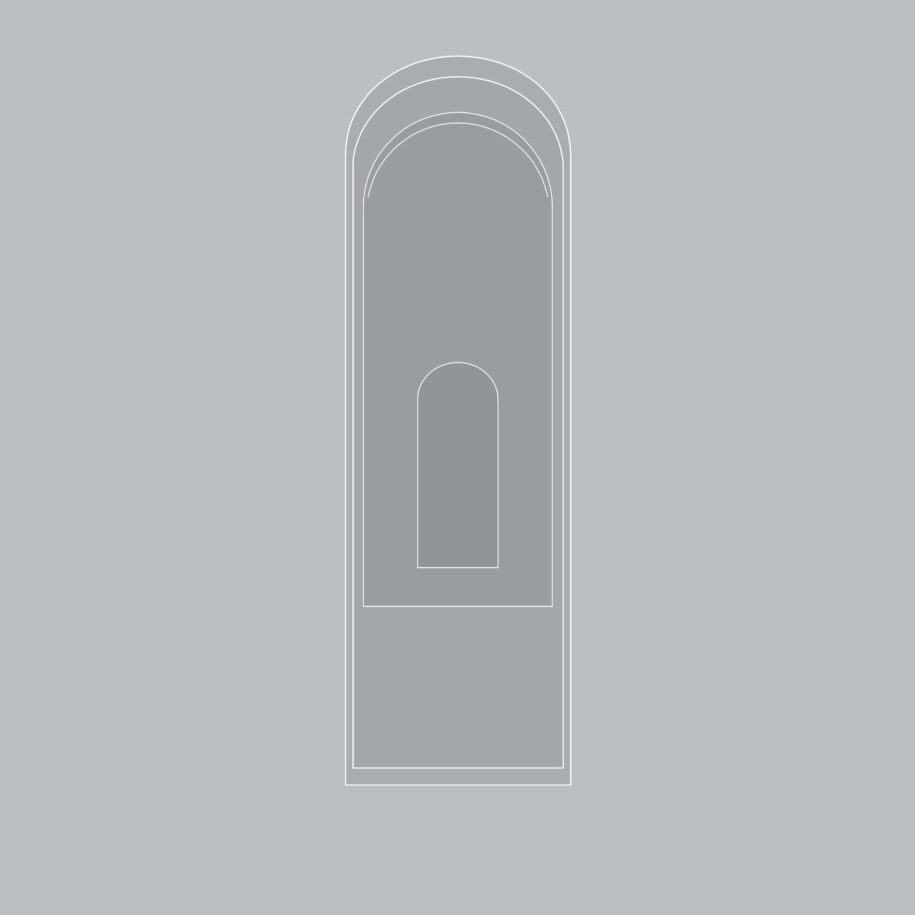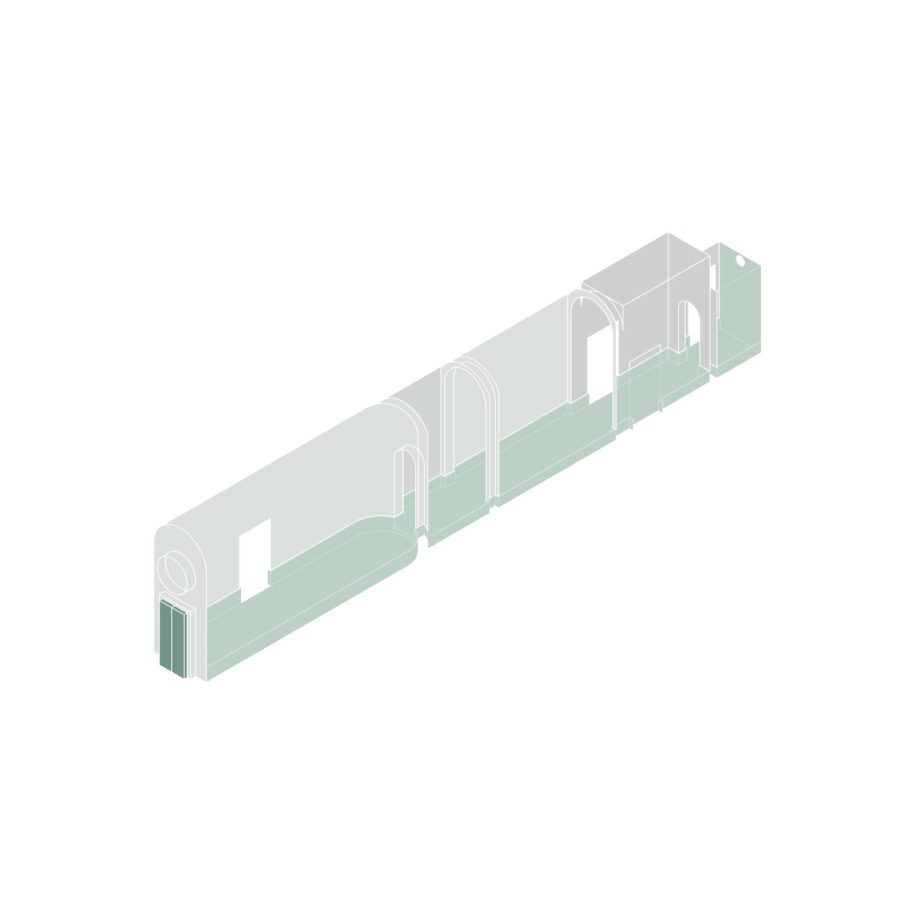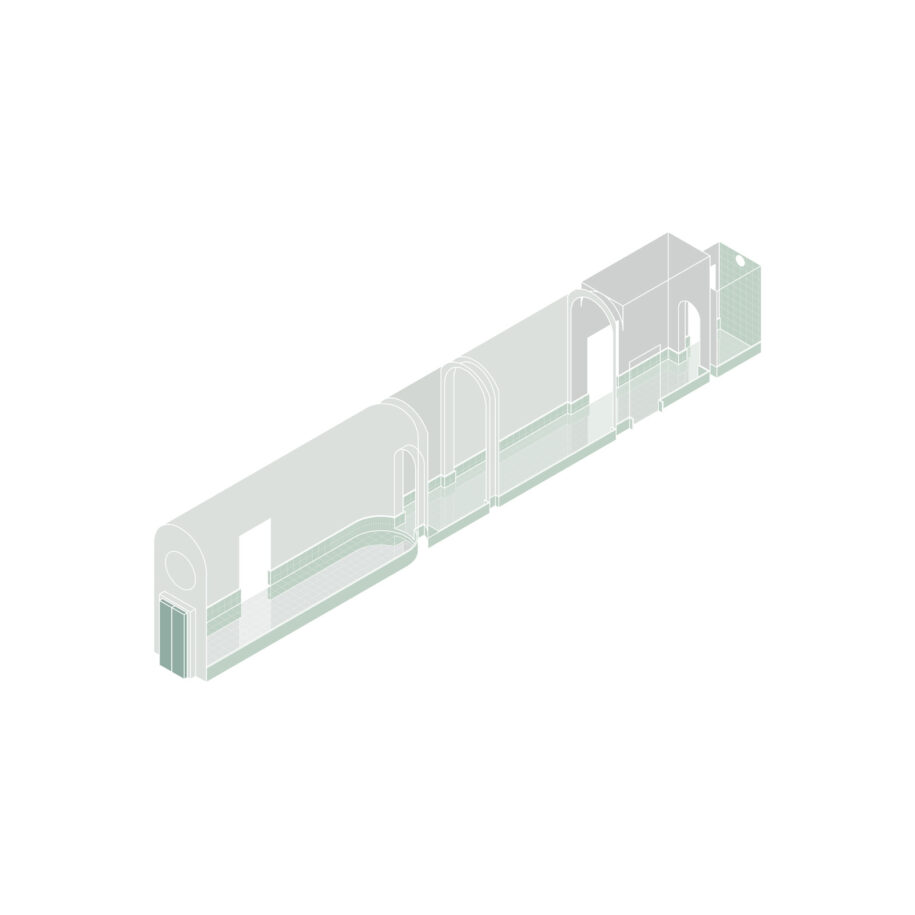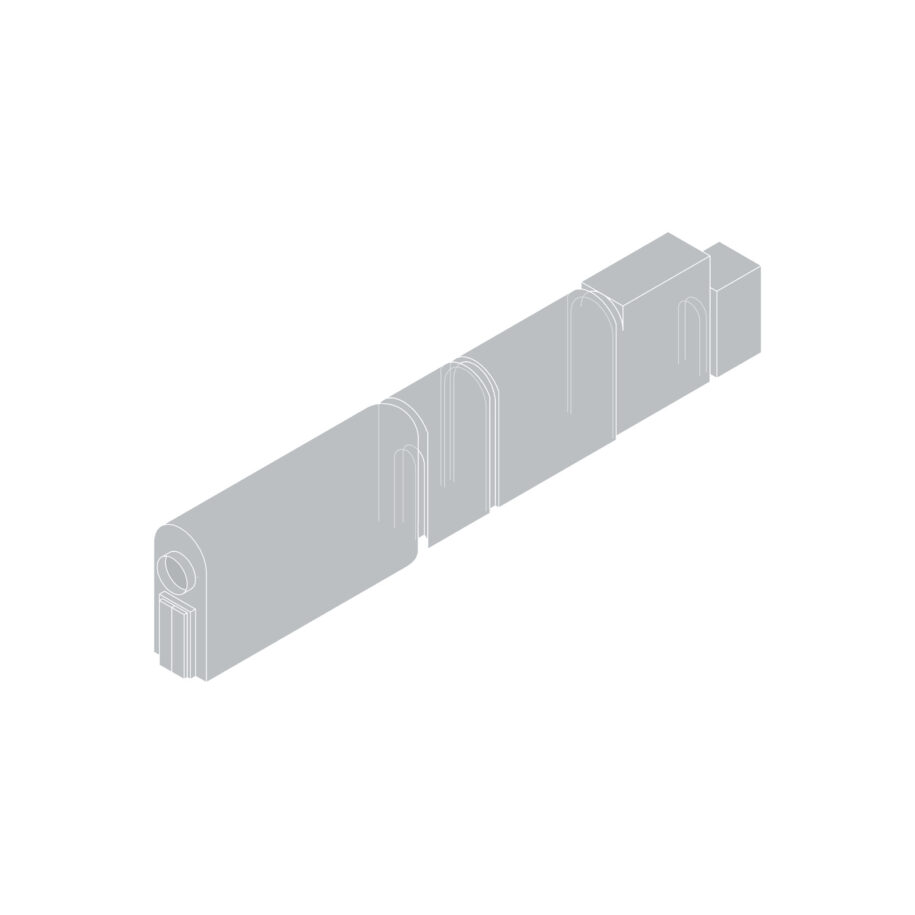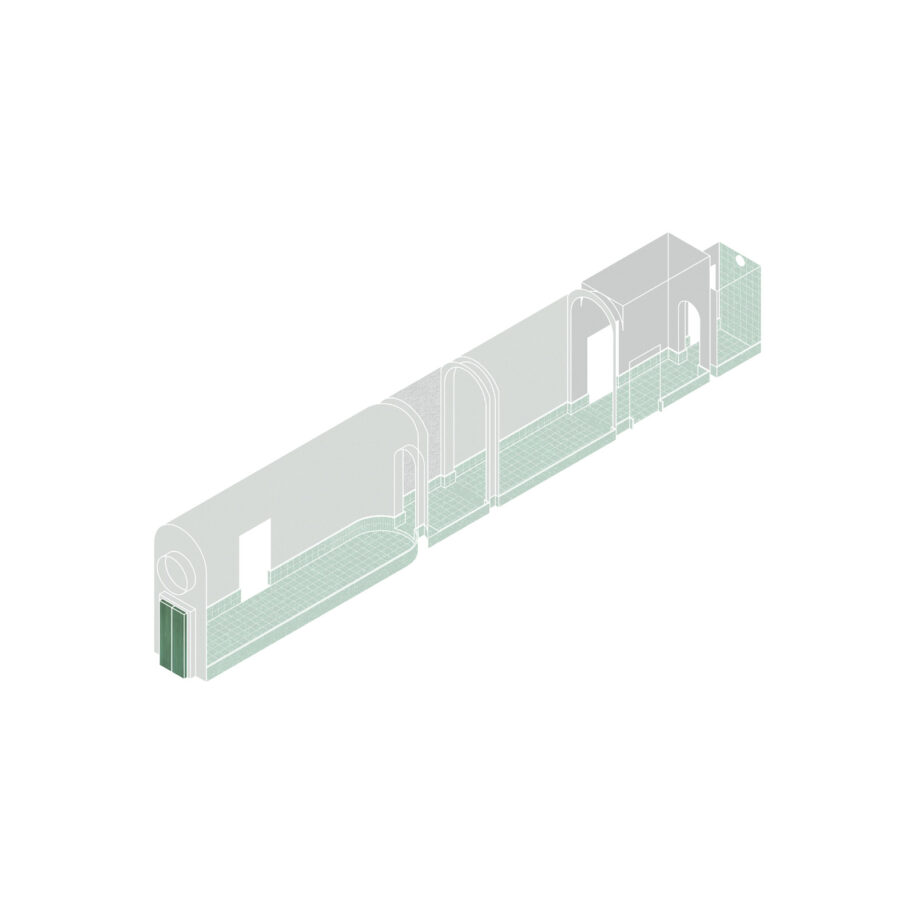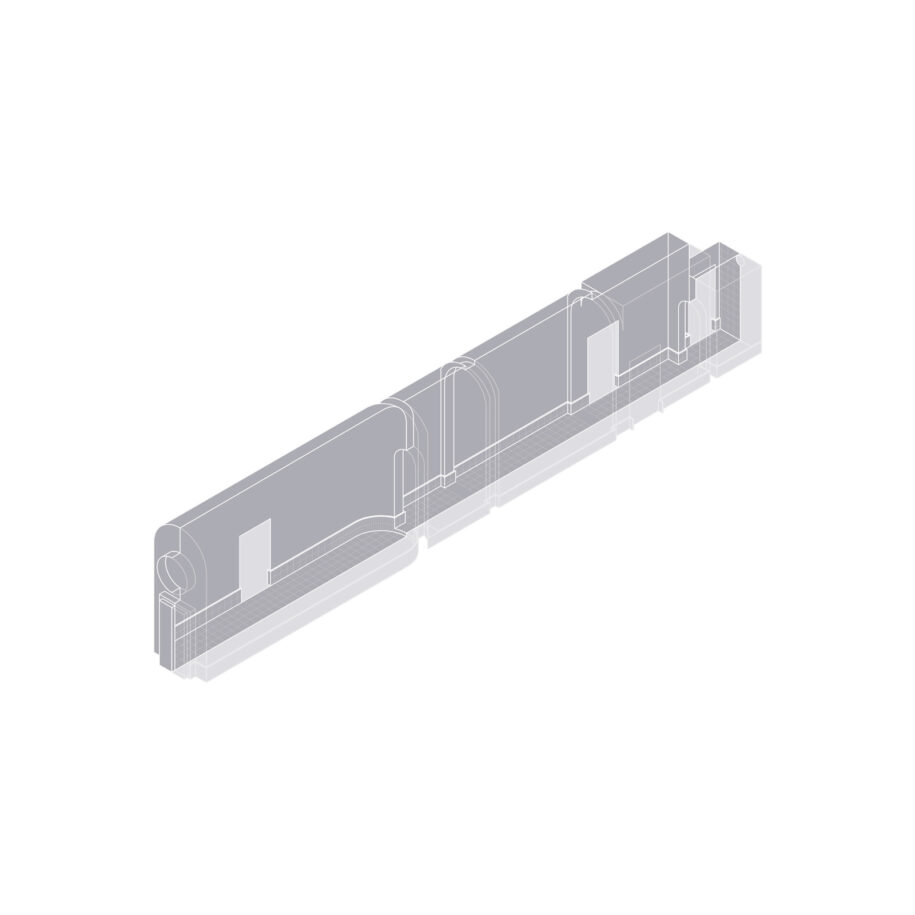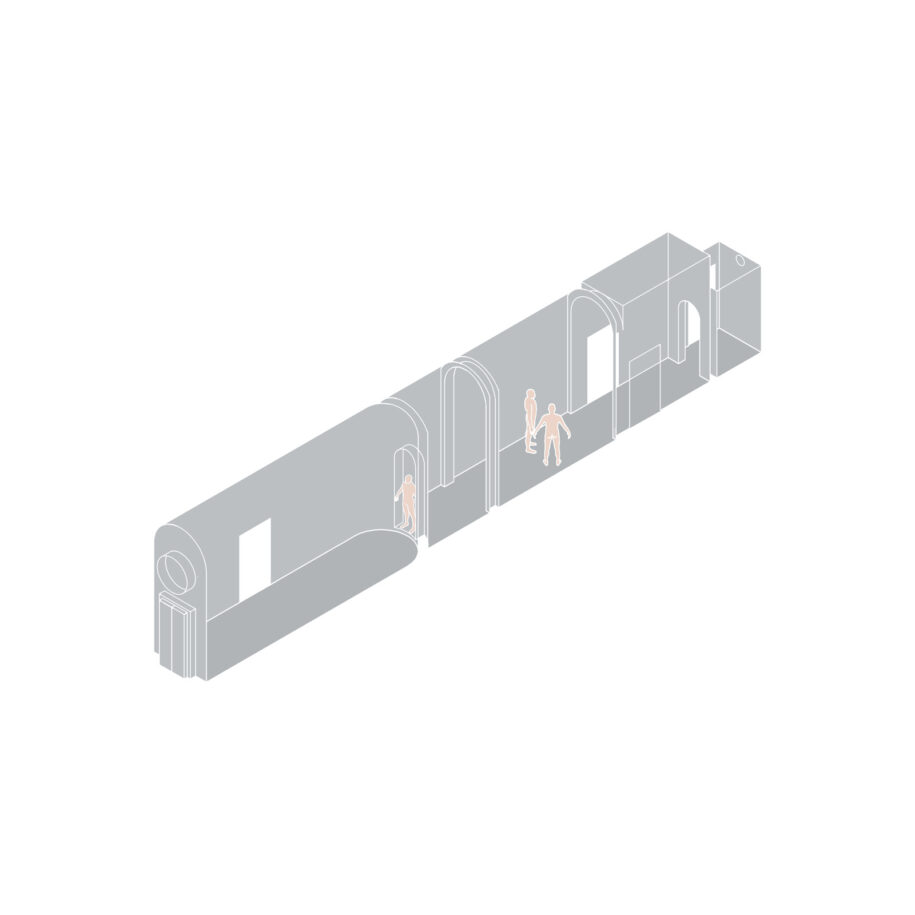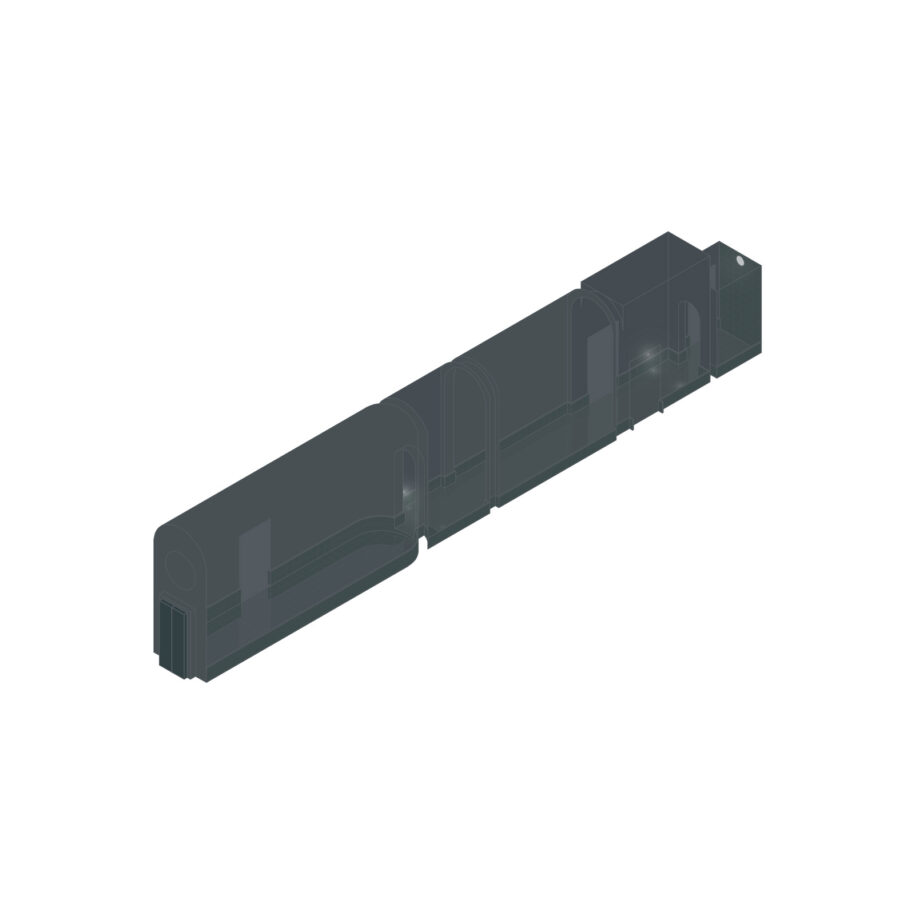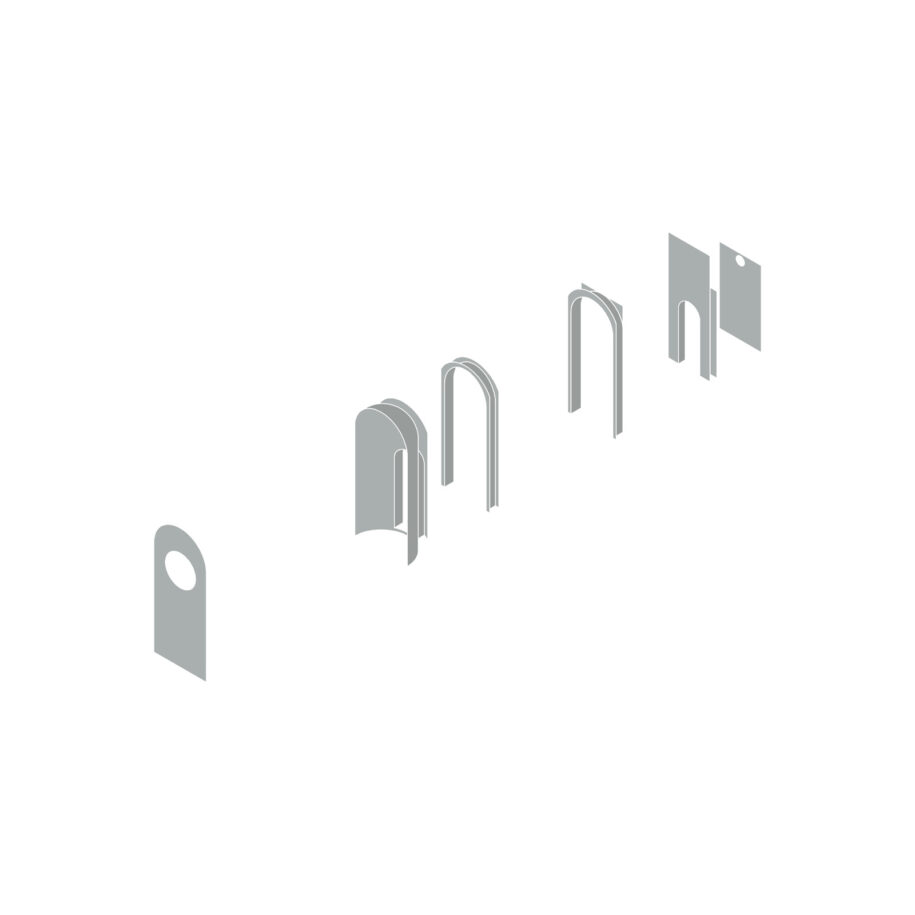Research thesis by Evdoxia Karageorgi and Konstantina Vasileiadou, entitled “Architecture and Eroticism. An imaginary wandering”, treats architecture as if it was a human being, like an Other through whom our own eroticism is mirrored.
-text by the authors
This Other calls us to know them, seeks to converse with us; yet the limits are lost. Who is the Other and who are we? Suddenly an amorous episode emerges through inexplicable reasons and impaired solutions. We want to comprehend. We converse. What we seek to know is the very substance we employ in order to speak.
Concepts such as continuity-discontinuity, transgression, death, religion, transcendence, power, seduction, appear as symbolic covering materials on the walls of the buildings that we came across in our wandering.
The following are fragments from the analysis of Specus Coralli, by Antonino Cardillo which is one of the five examples of “Architecture and eroticism. An imaginary wandering.”
/ color /
The feeling of wetness is intensified without the presence of water. This is due to the colors and the reflectivity of the floor. We can make an admission here. We cannot decide whether Specus Coralli looks more like emerging from the depths of the ocean or whether it is the image of the ocean itself which on the distant horizon coincides with the sky as if they are reaching their love-making peak. The colors change in succession, smoothly, with the floor always remaining an unchanged constant, irrespectively of the illusion created by the reflection of the color of the walls on its surface. Our legs are always in touch with the green color of the floor which comes up to our knees. This is the representation of the coward stasis we all do more or less, spontaneously, when we allow the water to reach only our knees before we make the decision to sink into it. Unlike the illusion of color changes of the floor, the walls are painted in a gradient from green to cold gray. All this color transition looks like an overture(1), as Antonino Cardillo himself says. By experiencing this tranquility, the idea of a sudden tide will soon cross our minds like a flare so the space will become “the space of transgression” (2).
/ reflection /
For an instant we will think that we are walking on the water and maybe that we are submerging in it. We may feel that we are floating. The space grows and deepens interminably as we observe the outlines of the openings; it grows but also narrows. The structure of the building is distorted, thus man becomes part of this distortion, just like a material.
/ form /
Passing through the entrance door we face a narrow, long corridor and on the top a series of incessant arches. Geometry is used as another tool of transition narrative; a transition from life to death, from the outside to the inside, from evil to virtuous. All this feeling is intensified by the changing of the level, the floor and the protrusions along the corridor which form new arches. There is an obvious underlying of the arch through the repetition and the lighting that we will examine below. The curvature of the roof extends the end; it is on the verge and resembles a semicolon. If we give in to the intimacy of the curve3 and to the warmth of the closed areas, the building unfolds in front of us like a forgotten cave waiting to be explored.
/ materiality /
The wooden doors of Specus Coralli open. The smooth surfaces of the walls round us up. Polished terrazzo tiles follow us up to the step. Going up, the tiles blur and the walls get rough. They beg us for a touch. As we move on the smooth surfaces appear again, but the blurry tiles still accompany us. At the end of the corridor the floor invites us to penetrate it, to get into it.
/ symmetry /
The corridor develops symmetrically. The axis of symmetry emphasizes its linearity, invites us to cross it. Visualizing it, the corridor is a stretched rope that forces us to walk along it. We are compelled to balance. However, as much as we desire to be in harmony with space, its order, its symmetry, our existence alone will disrupt the balance of its detailed geometry. Our bodies create new and unexpected spaces through fluid and unpredictable movements (4).
/ scale /
The scale here looks unfamiliar. In comparison with the height we are small. In comparison to the width we are big. The space is very tall and narrow. We feel the walls attempting to touch our body and the ceiling fending off, keeping a distance from this contact.
/ luminosity /
Depending on the location of our body the space is transformed. The shadows are tricking us. They create arches where they do not exist; they emphasize the existing ones and give spatial inklings. The constant movement of our bodies between light and shadow turns us sometime into a protagonist and others into a mere passerby.
/ rhythm /
A loop is created in the corridor or rather the corridor is created through this loop. This persistent array of arches makes the space look ceaseless, with endless depths.
1 Overture is an autonomous musical composition that is usually heard before the curtain rises to an opera or an oratorio. Its purpose is to prepare us for the tragic or joyful mood of the play to follow. It is the introductory part that precedes the stage action.
2 Georges Bataille, Erotism: Death and Sensuality, San Francisco, City Lights Publishers, 1986, p.16
3 Bachelard, The Poetics of Space, Boston, Beacon Press, 1994, p.146
4 Bernard Tschumi, Architecture and Disjunction, Cambridge, The MIT Press, 1994, p.123
Facts & Credits
Project title Architecture and Eroticism. An imaginary wandering
Students Evdoxia Karageorgi, Konstantina Vasileiadou
Supervisor Apostolos Kalfopoulos
Date June 2019
Course Research thesis
Institution School of Architecture, Aristotle University of Thessaloniki
Η ερευνητική εργασία της Κωνσταντίνας Βασιλειάδου και της Ευδοξίας Καραγεώργη, με τίτλο “Αρχιτεκτονική και Ερωτισμός. μία φαντασιακή περιήγηση”, αντιμετωπίζει την αρχιτεκτονική σαν έναν Άλλο που μέσα του καθρεπτίζεται ο ίδιος ερωτισμός.
-κείμενο από τις δημιουργούς
Αυτός ο Άλλος μας έλκει να τον γνωρίσουμε, επιδιώκει να συνομιλήσει μαζί μας. Όμως τα όρια χάνονται. Ποίος είναι ο Άλλος και ποιοι είμαστε εμείς; Ξαφνικά ένα ερωτικό επεισόδιο αναδύεται μέσα από ανεξήγητες αιτίες και περιπλεγμένες λύσεις. Θέλουμε να καταλάβουμε. Συνομιλούμε. Αυτό που αποζητάμε να μάθουμε, ταυτίζεται με το υλικό που χρησιμοποιούμε για να μιλήσουμε.
Έννοιες όπως συνέχεια-ασυνέχεια, παραβίαση, θάνατος, θρησκεία, υπέρβαση, εξουσία, αποπλάνηση, εμφανίζονται σαν συμβολικά υλικά επένδυσης στους τοίχους των κτιρίων που πρόβαλαν στην περιήγηση μας.
Ακολουθούν αποσπάσματα από την ανάλυση του Specus Coralli, του Antonino Cardillo που αποτελεί ένα εκ των πέντε παραδειγμάτων του “Αρχιτεκτονική και ερωτισμός. Μια φαντασιακή περιήγηση”.
/ χρώμα /
Το αίσθημα του υγρού στοιχείου εντείνεται δίχως στην πραγματικότητα να υπάρχει νερό. Αυτό συμβαίνει εξαιτίας των χρωμάτων και της ανακλαστικότητας του πατώματος. Μπορούμε εδώ να κάνουμε μια παραδοχή. Αδυνατούμε να αποφασίσουμε αν το Specus Coralli μοιάζει περισσότερο να αναδύεται από τα βάθη του ωκεανού ή αν είναι η ίδια η εικόνα του ωκεανού, η οποία στον μακρινό ορίζοντα συμπράττει με τον ουρανό σαν ερωτική πράξη σε ολοκλήρωση. Τα χρώματα αλλάζουν διαδοχικά, ομαλά, ωστόσο το πάτωμα παραμένει πάντα μία αμετάβλητη σταθερά, ανεξάρτητα από την ψευδαίσθηση που δημιουργεί η αντανάκλαση του χρώματος των τοίχων στην επιφάνεια του. Τα πόδια πατάνε πάντα στο πράσινο – χρώμα του πατώματος – που φτάνει μέχρι τα γόνατά μας. Αυτό αναπαριστά τη στάση που κάνουμε, λίγο ή πολύ όλοι, αυθόρμητα όταν επιτρέπουμε στο νερό να φτάσει μόνο μέχρι τα γόνατά μας πριν πάρουμε την απόφαση να βυθιστούμε μέσα του. Σε αντίθεση με την ψευδαίσθηση των χρωματικών αλλαγών του πατώματος, στα χρώματα των τοίχων υπάρχει μια διαβάθμιση από το πράσινο έως το ψυχρό γκρι. Όλο αυτό το παιχνίδισμα με τα χρώματα μοιάζει με μια ουβερτούρα (1), όπως αναφέρεται κι από τον ίδιο τον Antonino Cardillo. Βιώνοντας αυτή την ηρεμία, σύντομα η ιδέα μιας ξαφνικής παλίρροιας θα περάσει σαν έκλαμψη από το μυαλό μας, κι έτσι ο χώρος θα μετατραπεί σε “χώρο της παραβίασης” (2).
/ αντανάκλαση /
Για δευτερόλεπτα θα σκεφτούμε πως περπατάμε πάνω στο νερό και ίσως ότι βυθιζόμαστε. Μπορεί να νιώσουμε ότι αιωρούμαστε. Ο χώρος μεγαλώνει δίχως τέλος όσο παρατηρούμε τα περιγράμματα των ανοιγμάτων· μεγαλώνει αλλά και στενεύει. Η δομή του κτιρίου αλλοιώνεται και, όπως ακριβώς ένα υλικό, ο άνθρωπος γίνεται κομμάτι αυτής της αλλοίωσης.
/ μορφή /
Περνώντας την πόρτα της εισόδου ερχόμαστε αντιμέτωποι με ένα στενό, επιμήκη διάδρομο και στο ανώτατο όριο με μια σειρά από αδιάκοπες καμάρες. Η γεωμετρία χρησιμοποιείται σαν ένα εργαλείο αφήγησης της μετάβασης· μετάβαση από τη ζωή στο θάνατο, από το έξω στο μέσα, από το κακό στο καλό. Όλη αυτή η αίσθηση εντείνεται μέσω της αλλαγής του επιπέδου, του δαπέδου και των προεξοχών κατά μήκος του διαδρόμου, οι οποίες σχηματίζουν νέες καμάρες. Η καμπύλη της οροφής παρατείνει το τέλος· είναι στο ενδιάμεσο και θυμίζει μία άνω τελεία. Αν αφεθούμε στην οικειότητα της καμπύλης (3) και στη θαλπωρή των κλειστών περιοχών, το κτίριο ξεδιπλώνεται μπροστά μας σαν μια ξεχασμένη σπηλιά, η οποία περιμένει να την εξερευνήσουμε.
/ υλικότητα /
Ανοίγει η ξύλινη πόρτα του Specus Coralli. Περικυκλωνόμαστε από τις λείες επιφάνειες των τοίχων. Μας ακολουθούν μέχρι το σκαλοπάτι λουστραρισμένες πλάκες μωσαϊκού. Ανεβαίνοντάς το οι πλάκες θολώνουν και οι τοίχοι αγριεύουν. Μας παρακαλούν για ένα άγγιγμα. Μετέπειτα επανέρχονται οι λείες επιφάνειες αλλά οι θολές πλάκες μας συντροφεύουν ακόμα. Στο τέλος του διαδρόμου το πάτωμα μας καλεί να το διαπεράσουμε, να μπούμε μέσα του.
/ συμμετρία /
Ο άξονας συμμετρίας τονίζει τη γραμμικότητά του και μας ωθεί να τον διασχίσουμε. Οπτικοποιώντας τον, ο διάδρομος είναι ένα τεντωμένο σχοινί, το οποίο μας επιβάλει να περπατήσουμε κατά μήκος του. Αναγκαζόμαστε να ισορροπήσουμε. Ωστόσο, όσο κι αν έχουμε την επιθυμία να εναρμονιστούμε με το χώρο, την τάξη, τη συμμετρία του, η ύπαρξή μας και μόνο θα διαταράξει την ισορροπία της λεπτομερώς καθορισμένης γεωμετρίας του. Τα σώματα μας δημιουργούν νέους και αναπάντεχους χώρους, μέσω ρευστών και απρόβλεπτων κινήσεων (4).
/ κλίμακα /
Η κλίμακα εδώ μας ξενίζει. Καθ’ ύψος είμαστε μικροί και κατά πλάτος μεγάλοι. Ο χώρος είναι πολύ ψηλός και στενός. Οι τοίχοι είναι τόσο κοντά μας σαν να επιχειρούν να αγγίξουν το σώμα μας και το ταβάνι να απομακρύνεται, παίρνοντας απόσταση από αυτήν την επαφή.
/ φως – σκιά /
Ανάλογα με τη θέση του σώματός μας ο χώρος μεταμορφώνεται. Οι σκιές μας ξεγελάνε. Δημιουργούν καμάρες εκεί που δεν υπάρχουν, τονίζουν τις υφιστάμενες και αφήνουν χωρικές υπόνοιες. Η συνεχόμενη κίνηση των σωμάτων μας, ανάμεσα στο φως και τη σκιά, μας μετατρέπει άλλοτε σε πρωταγωνιστή και άλλοτε σε έναν απλό περαστικό.
/ ρυθμός /
Δημιουργείται μια λούπα μέσα στο διάδρομο, ή μάλλον δημιουργείται ο διάδρομος μέσω αυτής της λούπας. Αυτή η επίμονη σειρά από καμάρες κάνει το χώρο να μοιάζει δίχως τέλος, με άφταστα βάθη.
1Η ουβερτούρα είναι αυτόνομη μουσική σύνθεση που ακούγεται συνήθως πριν σηκωθεί η αυλαία σε μία όπερα ή σε ένα ορατόριο. Σκοπός της είναι να μας προετοιμάσει για την τραγική ή τη χαρούμενη διάθεση του έργου που θα ακολουθήσει. Είναι το εισαγωγικό τμήμα που προηγείται της σκηνικής δράσης.
2Bataille, Georges, Ο ερωτισμός, Μτφρ. Χουλιαρά Μίκα, Αθήνα, Εντροπία, 1981, σελ.23
3Bachelard, Gaston, Η Ποιητική του Χώρου, Μτφρ. Ελένη Βέλτσου, Ιωάννα Δ. Χατζηνικολή, Αθήνα, Χατζηνικολή, 2014, σελ.172
4Tschumi, Bernard, Architecture and Disjunction, Cambridge, The MIT Press, 1994, σελ.123
Στοιχεία έργου
Τίτλος εργασίας Αρχιτεκτονική και Ερωτισμός. μία φαντασιακή περιήγηση
Φοιτητική ομάδα Κωνσταντίνα Βασιλειάδου, Ευδοξία Καραγεώργη
Επιβλέπων καθηγητής Απόστολος Καλφόπουλος
Εξεταστική περίοδος Ιούνιος 2019
Μάθημα Ερευνητική εργασία
Σχολή Τμήμα Αρχιτεκτόνων Μηχανικών, Αριστοτέλειο Πανεπιστήμιο Θεσσαλονίκης
See the full version of research thesis, here!
Δείτε ολόκληρη την εργασία, εδώ!
READ ALSO: MYISIS 2.0 _ New Rituals_ Landscape Design of Vouliagmeni’s Lake, Attica | Student work by Lefkothea Spartioti and Ioanna Diamanti
